#Command Module
Explore tagged Tumblr posts
Text

Stepping out on the front porch. Astronaut David Scott opens the hatch to check out the view during Apollo 9, March 1969. In this pic taken by fellow astronaut Rusty Schweickart, ‘Gumdrop’, the Command Service Module is docked with ‘Spider’, the Lunar Module. A9 was the 1st flight incorporating all Apollo spacecraft components. The 10 day mission was the 2nd launched by a Saturn V rocket.
#apollo 9#spacecraft#command module#low earth orbit#astronaut#space travel#1969#earth orbit#astronauts#space exploration#vintage space#space#space age#nasa#moon landing#space race#spaceflight#nasa astronauts#nasa photos#space history#spacesuits#1960s
411 notes
·
View notes
Text
Skylab4🛰️ Space Station🪐 Command Module🛸 NASM

#Skylab 4#Command Module#Space Station#Astronomy#Museum#Smithsonian#NASM#NASA#Space#Science#National Air and Space Museum#Independence Avenue#Washington D.C.
94 notes
·
View notes
Text

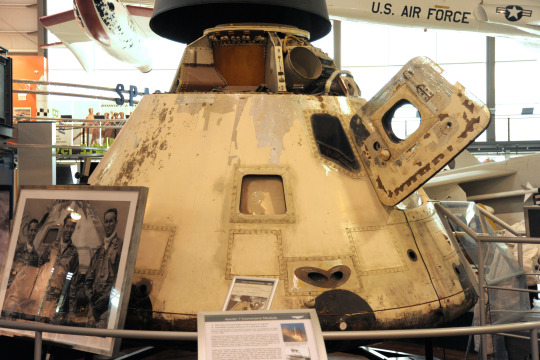
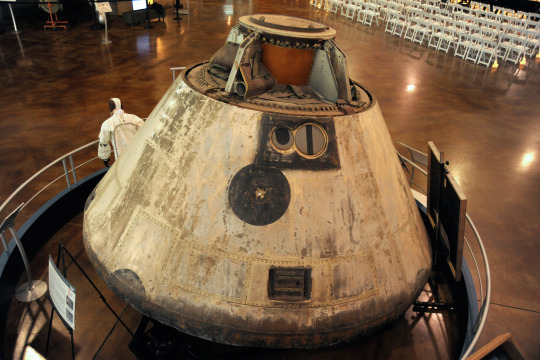
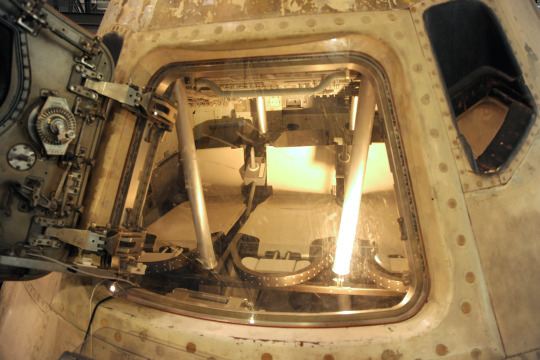
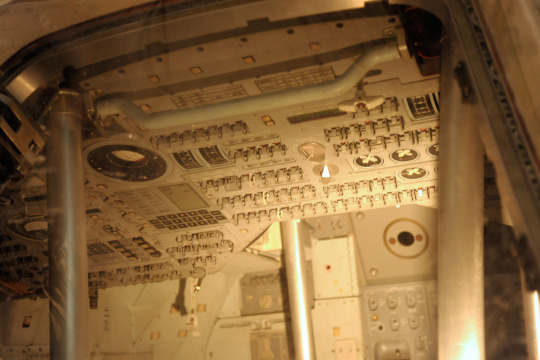
Apollo 7 - October, 1968
Frontiers of Flight Museum - Dallas, TX
239 notes
·
View notes
Text
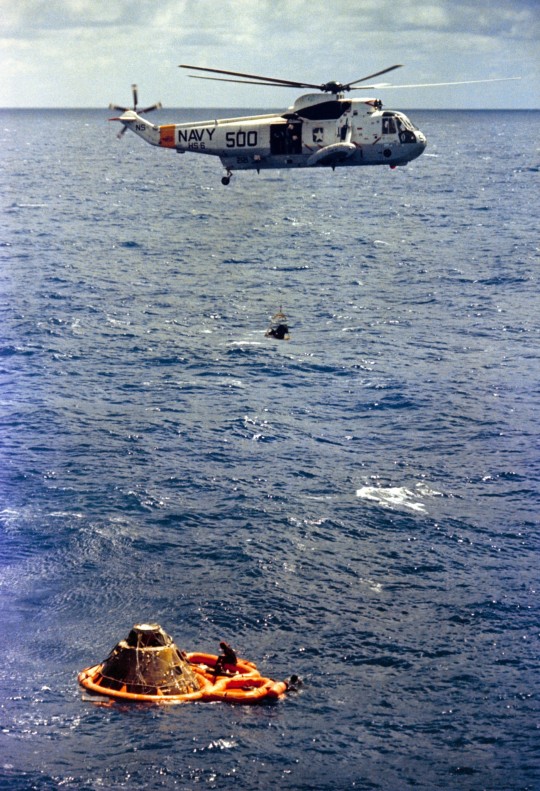
Apollo 14 recovery operations in the South Pacific Ocean - February 9, 1971
#NASA#USN#Apollo 14#Spacecraft#Command Module#Sikorsky#SH-3#Sea King#Moon Mission#Recovery#Helicopter
83 notes
·
View notes
Text
GETTING TO THE MOON

On the Apollo missions, the lunar module was in a compartment stage beneath the command module engines. Once the ship had reached a certain distance, that stage would separate and free the lunar module.

The command module would then dock with the lunar module. The spacecraft then continued on to lunar orbit in thesis configuration.
Upon arrival at the separation point, two astronauts would crawl through a pressurized tunnel from the command module into the lunar module. The third astronaut remained in the command module, orbiting above the moon.

The lunar module then separated and proceeded to its landing point. The lunar module (or LEM - Lunar Excursion Module, as it was referred to at this point) became home for the two astronauts during their brief stay on the moon.
-Apollo 11 stayed 21 hrs 36 mins
-Apollo 12 stayed 31.6 hrs
-Apollo 13 never landed
-Apollo 14 stayed 33 hrs
-Apollo 15 stayed 67 hrs
-Apollo 16 stayed 71 hrs
-Apollo 17 (the last men on the Moon) stayed just seconds shy of 75 hrs.

For departure the top half of the LEM, or ascent stage, would fire its rockets and ascend into lunar orbit to rendezvous with the command module. The descent stage was left behind on the lunar surface.
Once the ascent stage had docked with the command module the astronauts would transfer back. The ascent stage was then jettisoned, and all three astronauts rode the command module back to Earth to splashdown somewhere in the ocean.
Just a reminder of what REAL astronauts experienced back in the day. Meanwhile, in present times, everyone seems to be going ga-ga over a bunch of celebrities who central high and experienced a brief moment of zero-G.
#Apollo#command module#lunar module#LEM#Lunar Excursion Module#moon landing#it's real!#NASA#space travel#real space travel
9 notes
·
View notes
Text


Apollo 13 command module Odyssey on the deck of USS Iwo Jima (LPH-2), after splashdown on April 17, 1970.
7 notes
·
View notes
Text
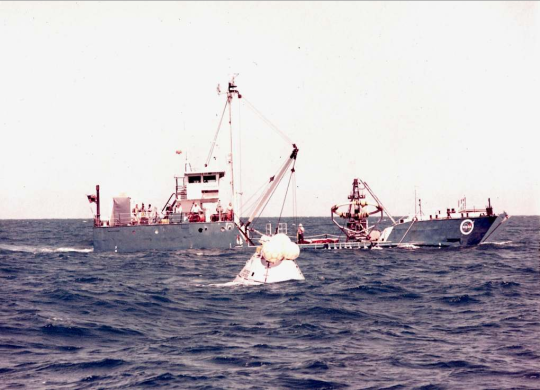
"Apollo Command Module CSM-007A near NASA's MV Retriever in the Gulf of Mexico, during a manned 48-hour Apollo Block II Command Module postlanding systems qualification test."
CM-007 was delivered to NASA in 1966. After serving as a ground test vehicle, CM-007 was modified in 1967 for use in water-survival training as CM-007A. As part of their training, the astronauts inside the capsule were dropped into the Gulf of Mexico by a crane from an aircraft carrier to simulate the force of splashdown. Apollo crews also trained for extended recovery by remaining at sea for several days at a time in the Command Module. Such training prepared astronauts for the possibility of a splashdown far from the planned recovery site.
Date: April 5, 1968
NASA ID: S68-30160
#CSM-007#CM-007A#Apollo Program#Apollo Block I Command and Service Module#Command Module#NASA#Gulf of Mexico#April#1968#my post
42 notes
·
View notes
Video
Descent to Fra Mauro by NASA on The Commons Via Flickr: This North American Rockwell artist's concept depicts the Apollo 13 Lunar Module (LM) descending to the Fra Mauro landing site as the Command and Service Module (CSM) remains in lunar orbit. Astronaut Thomas K. Mattingly II, the command module pilot, was to photograph the LM's descent from the CSM. For what was to be NASA's third lunar landing mission, astronauts James A. Lovell Jr., commander, and Fred W. Haise Jr., lunar module pilot, were to descend in the LM to explore the Moon. Mattingly was bumped from the crew three days before launch after being exposed to German measles, with backup command module pilot John "Jack" Swigert taking his place. Apollo 13 launched on April 11, 1970, with little fanfare. But two days into the mission, an oxygen tank onboard exploded, transforming Apollo 13 into a tense rescue mission that hinged on the ingenuity and grit of the crew, mission control, and NASA engineers. NASA Media Usage Guidelines Credit: NASA Image Number: S70-31898 Date: March 20, 1970
#artwork#artist depiction#artist conception#Moon#Moon Landing#Fra Mauro#Command Module#Lunar Module#apollo 13#Lunar Landing#painting#flickr#Mecha#Spacecraft#NASA
6 notes
·
View notes
Text

Exterior view of the Apollo 204 spacecraft after the fire, which killed astronauts Grissom, White and Chaffee during a plugs-out test at the Kennedy Space Center on January 27, 1967.
5 notes
·
View notes
Text
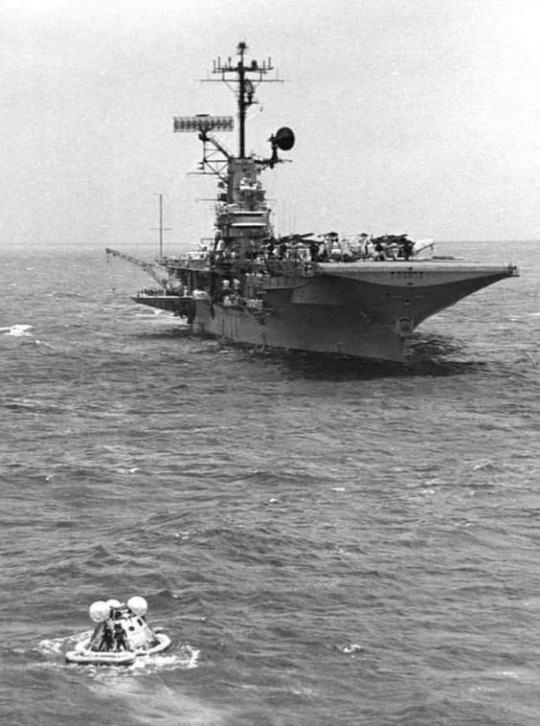
Apollo 11
24 July 1969, CV-12 USS Hornet prepares to recover Apollo 11 Command Module Columbia.
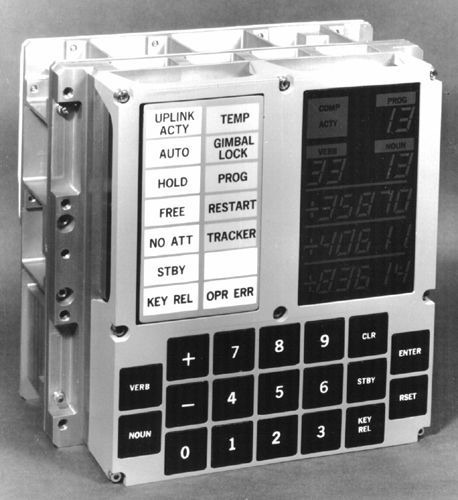
Apollo Guidance Computer
32 notes
·
View notes
Text
Trying to solve the problems makes the third LM so late to the Cape that there is not enough time to ready it for its scheduled flight.*
* That was why Apollo 8, originally intended to be a mission to Earth orbit using both the LM and the command module, became a command-module-only mission that went all the way to the Moon, and Rusty Schweickart and James McDivitt were the first to fly the LM on Apollo 9, an Earth-orbit shakedown cruise.
"The Moon: A History for the Future" - Oliver Morton
#book quotes#the moon#oliver morton#nonfiction#lunar module#problem solving#behind schedule#cape kennedy#running late#space flight#lunar mission#moon landing#apollo missions#apollo 8#orbit#rusty schweickart#james mcdivitt#apollo 9#command module
0 notes
Photo
Art by Davis Meltzer.

Flying solo, duo & trio via a little, medium & big rocket. The 3 spacecraft & relative rockets of Project Mercury, Gemini & Apollo. The 3 spacecraft were used between 1961-72 during the space race. The Mercury capsule carried food, water & O2 supplies for about a day. Project Gemini was the 1st to use Houston for Mission Control. Astronaut Gus Grissom was involved so heavily in the design that the other Original 7 astronauts nicknamed it the ‘Gusmobile’. It measured 18 feet, 5 inches long & 10 feet wide; not a lot of room for 2 people! The Apollo Program used the 363-foot tall Saturn V rocket with the Command (Control Center)/Service (unpressurized) & Lunar Module perched on top, pointed straight at the moon!
#davis meltzer#spaceflight#spacecraft#realistic space ship#atlas#titan ii#saturn v#mercury program#gemini program#apollo program#space capsule#command module#service module#lunar lander#astronaut#nasa
366 notes
·
View notes
Video
Michael Collins practices in a simulator prior to Apollo 11 launch. by NASA on The Commons Via Flickr: With 18 days before launch, Apollo 11 Command Module (CM) pilot Michael Collins practices docking hatch removal from CM simulator at NASA Johnson Space Center. NASA Media Usage Guidelines Credit: NASA Image Number: S69-38317 Date Taken: June 28, 1969
0 notes
Text



space monkey x earth dinosaur costumes purchased off space temu (a subdivision of elkoss combine)
#halloween#mass effect#mass effect fanart#shakarian#shepard x garrus#femshep#commander shepard#garrus vakarian#video games#bioware#art#artists on tumblr#illustration#milkyart#together they will (checks notes) steal your data modules and go extinct!
782 notes
·
View notes
Text
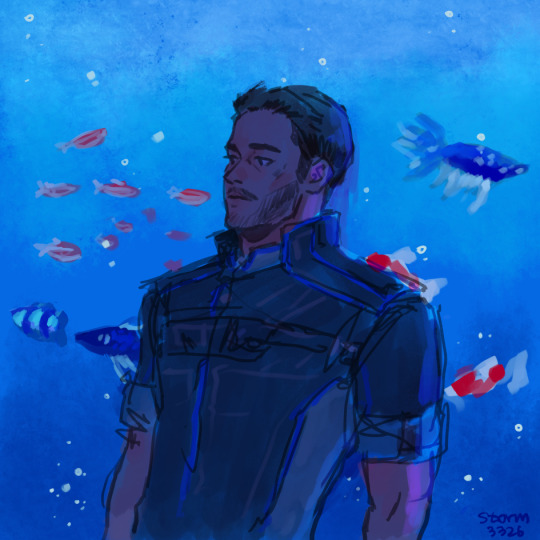
another shepard doodle! with his fish!
in my headcanon shepard is going to lose it when he forgot to feed the fish and killed them. something small and seem insignificant to others might be the one thing that brings you down rather than a big scale disaster.
138 notes
·
View notes
Text
Apollo program

246 notes
·
View notes
